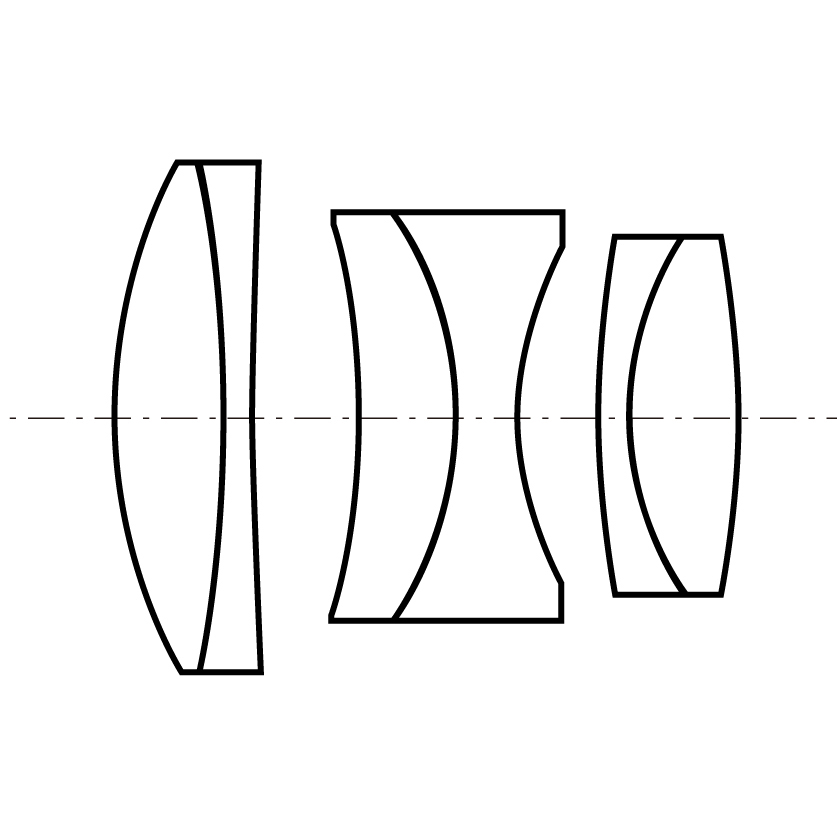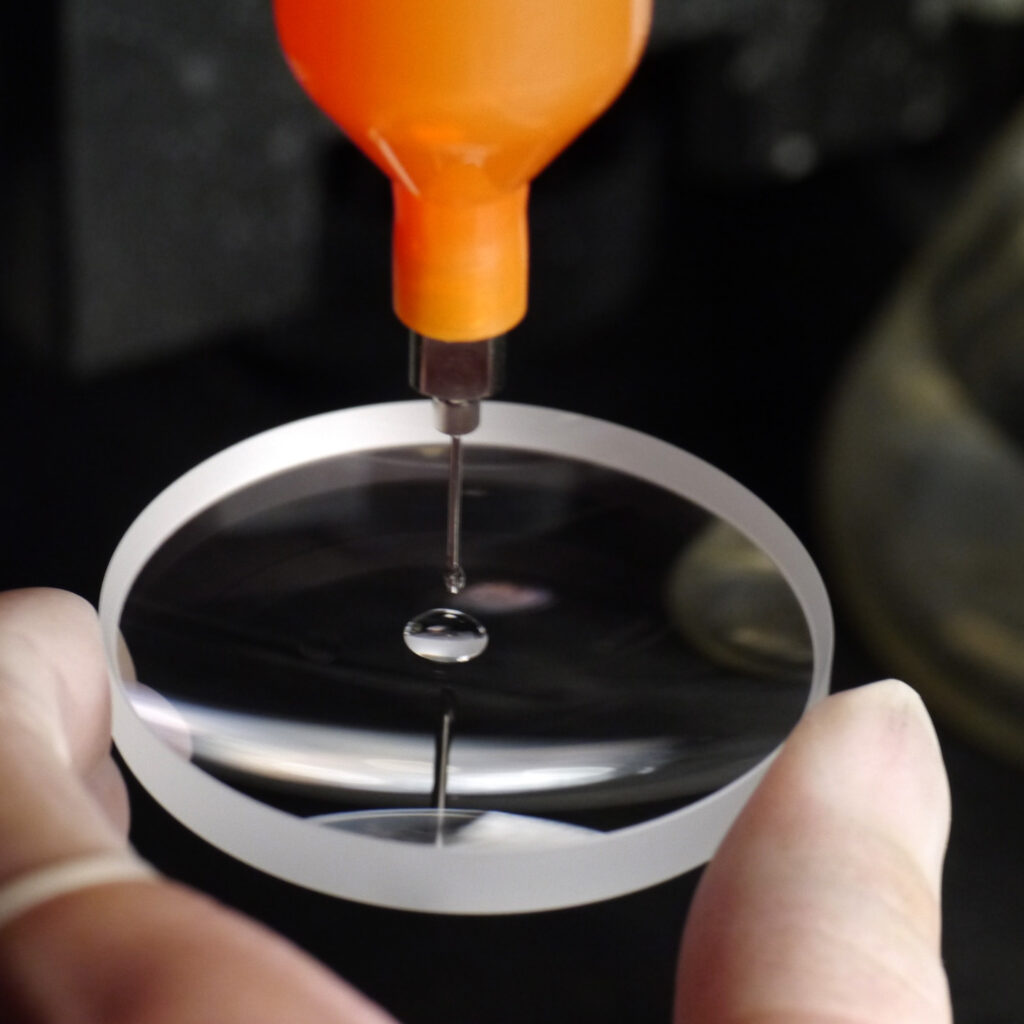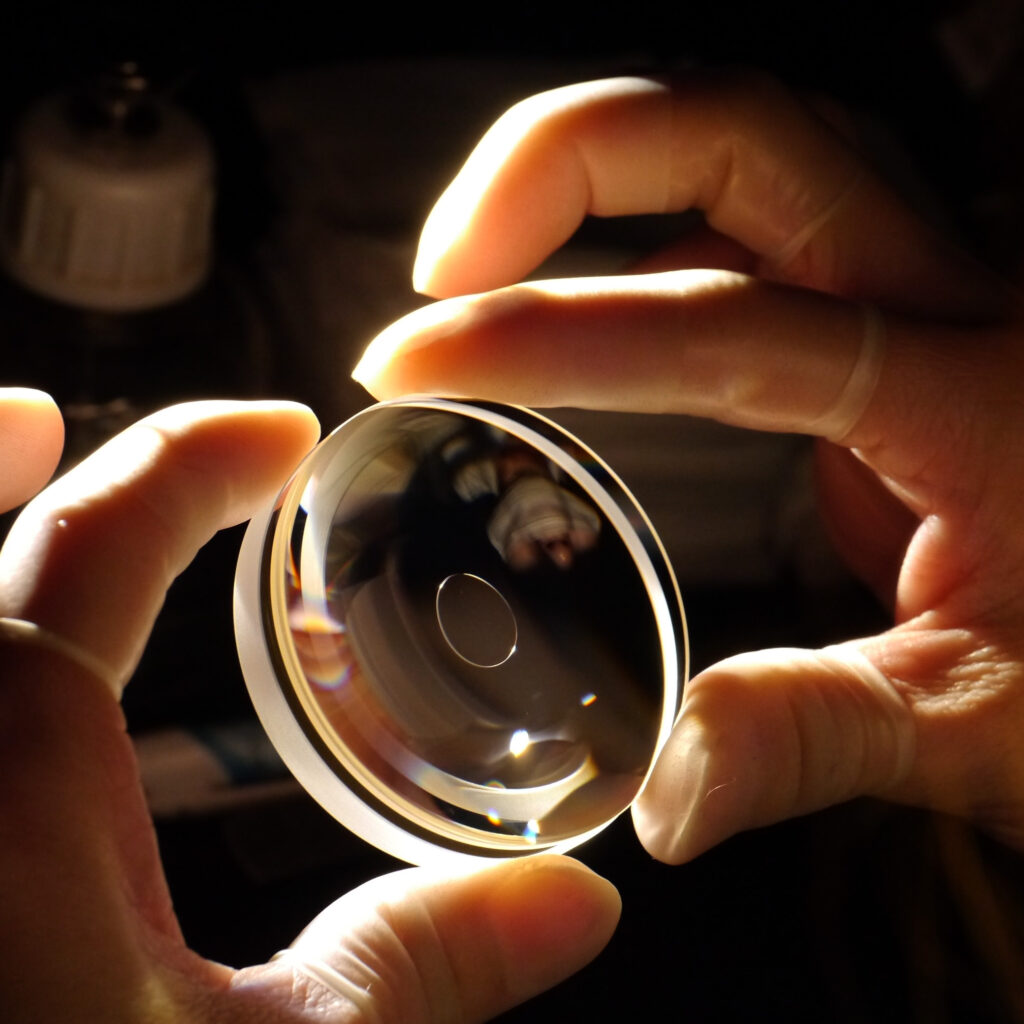Cementing elements by assessing the center

In a cramped space with minimal lighting that looks like a laboratory, an operator collates the crosslines displayed on the monitor of a measuring instrument when an optical element is irradiated with a blue-violet light. The above photograph shows the operator who is assessing the centers of glued elements and accurately aligning the centers to the same position. While the adhesive has yet to harden, the operator aligns the optical axis by delicately rotating the planes of the attached elements with his fingertips. This process is called the “centering of balsam-glued elements.” If you are interested in old lenses, you may have heard of the “separation of balsam-glued elements.” This expression is used in the second-hand camera industry to describe glued elements that have separated after an extended period of time has passed since they were manufactured.

Photography lenses that pursue optical performance are composed of several elements. In many cases, cemented elements are included in the configuration. The above configuration diagram shows the use of three sets of cemented element with each set consisting of two elements. It is, therefore, indicated as 6 elements in 3 groups. In the past, naturally derived resin such as Canada balsam was used to cement elements because of its thermoplasticity and refractive index close to optical glass. At present, however, balsam is not used due to problems arising from its workability and weather resistance. Instead, a special adhesive that hardens when exposed to ultraviolet light and still referred to as “balsam” is used. In the opening photograph, the optical elements are being irradiated under a blue-violet light that hardens the adhesive while the elements are being centered.


The job of gluing two elements together before centering requires great skill. The operator visually checks the appearance of the surface of elements and puts one drop of adhesive on the center of the concavity. After carefully assembling the two elements, the operator spreads the adhesive by evenly expanding its diameter to the outer boundary while pushing out minute bubbles trapped in the adhesive. We do this work by hand because touch is needed to thin the adhesive as much as possible. This process minimizes the thickness of the adhesive and, in the process, eliminates unnecessary refraction. Our goal is to make high-end optics however laborious efforts it takes. The manufacturing skills that turn those thoughts into reality are the advantages and pride of Cosina.